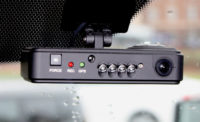Surge Protection Planning Proves Essential in Security System Design

Physical security planning and building system design are ever-evolving fields as technology continues to advance. The open architecture of physical security solutions, the availability of add-on software analytics (i.e. license plate recognition, people counting, etc.), the communication capabilities of building and life safety systems and the necessity for code compliance have all contributed to the complexity of system planning and design.
Surprisingly, often the design of security systems includes a weakness which is only revealed when it is too late – the absence of surge protection. When this flaw is discovered, irreparable or expensive damage has usually occurred due to power surges caused by any number of internal or external sources.
The expression, “fail to plan and plan to fail,” is very fitting when surge protection is missing from system design, and here are a few reasons why:
Prevention – It's easier to stop something from happening in the first place than to repair the damage after it has happened. For example, it’s obvious to anyone who has had to replace an engine that it’s a bad decision to try to save money by not changing the oil in your car. This same principle applies directly to surge protection for fire, building and security systems.
There are two types of situations where surge suppression devices are necessary to protect equipment. The first is a power spike, which occurs when electrical current suddenly rises for a short period of time – often less than a thousandth of a second. The second situation, which is more severe, occurs when there is a power surge. These can result from several different sources: faulty wiring, lightning strikes or a sudden change in electrical current; for example, when devices are turned on or off. Spikes can also easily enter data/telecom lines (i.e. phone, cable or satellite systems, local area networks <LAN>, etc.) just as they can electric power lines. The simple implementation of surge protectors, regardless of the source location, safeguards against over-voltage being absorbed by life safety and security devices so they continue operating as intended without interruption.
Costs – We’ve all heard stories about systems that have been damaged by lightning strikes – and the costs to repair or replace these systems can range from tens of thousands of dollars up to over $1 million. In one example we saw, a lightning strike not only destroyed an entire security system, but also jumped to the nearby IP network and destroyed a significant number of the connected laptops and other computing resources. Moreover, equipment and cabling are not the only costs. Some facilities must be evacuated when the fire alarm systems stop functioning. When security systems are out of service, the parking lots, doors, and secure areas need to be covered by temporary security officers at an additional cost. And, there is also a loss of productivity if staff is delayed by congestion and manual processes at entrances, or if their work equipment and/or work data is damaged or lost.
At the lowest price points, surge protection devices absorb the excess energy on the line to save the protected systems. Higher quality devices can absorb multiple hits and remain operational. Some surge protection devices have the capability to alert operations staff that they have performed their function and may need to be checked or replaced to maintain protection. This is the best approach, because staff may not be aware of recent power surges and thus that the protection may be compromised.
Reliability – Surge protectors are designed for specific voltage levels and circuit configurations and a surge current rating typically determines its level of protection. It’s important to note that simply having a surge protector doesn’t guarantee the safety of your equipment. The surge protector needs to be strong enough to handle the regular surges and spikes in your application. Guidelines established by the National Lightning Safety Institute state, “Only surge protection that is properly sized and grounded can be successful in preventing equipment damage.”
As improbable as it might seem, many security professionals do not realize that power strips and surge protectors are distinctly different products and will install a power strip thinking they are protecting their system. A power strip is essentially an extension cord with multiple plug receptacles. When numerous devices with high voltage requirements are plugged into a single power strip, they pose a potential fire hazard and can stop working without warning. A surge protector, on the other hand, prevents power surges from damaging equipment by diverting excess voltage to ground.
Designing surge protection into a new system is easy and affordable, and it is also easy to add protection to existing systems before any further damage occurs. Implementing a surge protection strategy during the planning process – or after – is the best way to be sure you are exercising prevention to help avoid an expensive cure.
Looking for a reprint of this article?
From high-res PDFs to custom plaques, order your copy today!








